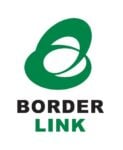
In today’s globalized world, mastering new languages is key to effective communication across cultural divides. Choosing to learn to speak Japanese, in particular, opens doors in the rich cultural and dynamic business landscape of Japan, where diverse employees work side by side, striving to achieve common goals.
For non-native speakers entering the Japanese job market, mastering the intricacies of the language is not just about holding casual conversations; it’s about understanding the nuances of business communication, building trust with colleagues, and ensuring that ideas and intentions are conveyed clearly and accurately.
However, navigating the Japanese workplace as a non-native speaker presents unique challenges. From the subtleties of keigo (honorific speech) to the unspoken expectations rooted in centuries of tradition, the journey to fluency is both rewarding and complex. This article aims to equip you, the aspiring professional in Japan, with strategies on how to learn to speak Japanese, overcome language barriers, integrate seamlessly into your teams, and excel in your chosen field.

Understanding the Language Barrier
Japan, with its multifaceted linguistic landscape, offers a distinctive challenge to non-native professionals. Before diving into solutions, it’s crucial to recognize the nuances that differentiate casual conversations from business discourse.
Conversational vs. Business Japanese: While conversational Japanese might help you order your favorite dish at a local izakaya or navigate the streets of Tokyo, business Japanese is an entirely different ball game. The workplace often demands a higher level of politeness, precision, and formality. Familiarity with Keigo, or honorific speech, becomes essential, as does understanding the subtle differences in vocabulary and phrasing used in a professional setting.
Common Misconceptions: Many foreigners believe that a rudimentary understanding of Japanese will suffice in the workplace. However, even small misinterpretations can lead to significant misunderstandings, especially when dealing with contracts, negotiations, or team projects. For instance, the Japanese language often relies on implied meanings or unspoken context, which can be perplexing for those used to more direct forms of communication.
Pitfalls in Communication: English speakers may find themselves in situations where they think they’ve communicated a point clearly, only to discover it was misunderstood or misconstrued. This can result from direct translations that don’t carry the same weight in Japanese or from missing the cultural context behind certain phrases or idioms.
By grasping these intricacies and challenges, professionals can better equip themselves to tackle the language barrier head-on. The journey to effective communication begins with awareness and understanding, laying the foundation for the strategies and resources explored in the subsequent sections.

Learn to Overcome Language Barriers
Once we start to recognize the challenges, the next step is to adopt tangible strategies to bridge the linguistic divide. Here are some tried-and-tested methods to enhance communication in the workplace:
Active Listening: It’s not enough to just hear; one must listen intently. This involves focusing on the speaker, noting non-verbal cues, and asking clarifying questions if something is unclear. In Japan, where indirect communication is common, active listening can prevent misunderstandings and foster better relationships.
Using Technology: The digital age has brought a plethora of tools to assist in language comprehension. Translation apps, online dictionaries, and even AI-powered real-time translation devices can be invaluable aids. However, while these tools are helpful, they should be used as supplements and not replacements for genuine language learning.
Body Language: Often, it’s not just about the words but how they’re conveyed. In Japan, certain gestures or expressions might have different meanings than in other cultures. Familiarizing oneself with these can help in understanding the sentiment behind the words. However, it’s equally vital to be aware of one’s own body language to ensure it aligns with the intended message.
Preparation: If there’s a crucial presentation or meeting on the horizon, preparation is key. This might mean rehearsing with a colleague, seeking feedback, or even scripting out certain sections to ensure clarity and accuracy. Being well-prepared not only boosts confidence but also ensures that the message is delivered effectively.
These strategies are just the beginning. With dedication, practice, and a willingness to learn, language barriers can transform from daunting obstacles into surmountable challenges. In the following sections, we’ll explore resources and avenues to further enhance your Language skills in the workplace.
Resources and Tips on How to Learn to Speak Japanese
To effectively navigate the linguistic challenges of the Japanese workplace, one must have access to the right tools and resources. Here’s a compilation of valuable avenues to assist in your language journey:
Language Schools: Japan boasts a plethora of language institutions that teach specialized courses in business Japanese.
Online Platforms: The digital age offers a wealth of online resources tailored for business professionals. Platforms like NHK World’s Japanese lessons, Japanesepod101, and Tofugu offer interesting modules ranging from beginner to advanced levels, focusing on business vocabulary and scenarios.
Partner Learning: This innovative approach involves pairing up with a native speaker keen to learn your language. It’s a win-win: you learn to speak Japanese, and they practice your language. There are several Websites and apps that can be used to find a language partner.
Books: Traditional resources, like textbooks focused on business Japanese, can be invaluable. Titles such as “Japanese for Professionals” or “Business Japanese: Over 1,700 Essential Business Terms in Japanese” can provide a solid foundation.
Language Meetups: Many cities in Japan host regular language exchange meetups where locals and foreigners gather to practice various languages. Not only is this a great way to learn to speak Japanese, but it also offers networking opportunities.
Corporate Language Training: Some companies, recognizing the importance of effective communication, offer in-house language training for their employees. If available, this can be an excellent way to learn in a focused, job-specific context.
Empowering oneself with the right resources can make the journey of how you learn to speak Japanese more structured and efficient. As you delve into these tools and platforms, remember that consistent practice, combined with real-world application, is the key to mastering and skill.

The Role of Cultural Integration
While linguistic fluency is undeniably crucial, it’s just one piece of the puzzle. True integration into the Japanese workplace requires an understanding and appreciation of the deeper cultural nuances that permeate professional interactions.
Understanding Keigo: Beyond just a form of polite speech, keigo is a reflection of Japan’s hierarchical society. Mastering the subtle differences between sonkeigo (respectful language), kenjougo (humble language), and teineigo (polite language) is paramount in professional settings. It’s not just about using the right words but understanding the relationships and dynamics they signify.
Cultural Work Events: Events like the nomikai (after-work drinking parties) or shinnenkai (New Year parties) play a vital role in team building and camaraderie. Participating actively in these events can help build trust, deepen relationships, and offer insights into the less formal aspects of Japanese work culture.
Being Open to Feedback: The Japanese workplace values harmony and avoids confrontation. As a result, feedback might be delivered subtly or indirectly. Cultivating an openness to such feedback, actively seeking it out, and acting upon it can pave the way for better integration and professional growth.
Recognizing the Importance of Non-verbal Communication: In Japan, what isn’t said often holds as much weight as what is verbalized. Observing and understanding non-verbal cues, be it a bow, a pause, or an expression, can offer deeper insights into meetings, negotiations, and everyday interactions.
Respect for Rituals and Traditions: From the morning greetings (aisatsu) to the proper way to exchange business cards (meishi), respecting and adhering to these rituals can go a long way in cementing one’s place in a Japanese organization.
By immersing oneself in the cultural fabric of the Japanese workplace, non-native professionals can transcend mere linguistic communication, fostering genuine relationships and earning the respect of their colleagues.
Additional Tips for Learning to Speak Japanese
While mastering the language and understanding cultural nuances is fundamental, there are additional strategies that can further enhance a non-native speaker’s experience in the workplace:
Joining Support Groups: There are numerous communities and groups of expatriates or non-native speakers working in Japan. Engaging with these groups can provide invaluable insights, shared experiences, and a sense of camaraderie. Platforms like Meetup or Facebook often have dedicated groups for such professionals.
Continuous Improvement: Language is dynamic, and the business world is ever-evolving. Dedicate time regularly to update your language skills, stay abreast of new business terminologies, and familiarize yourself with emerging trends in the corporate landscape.
Seeking a Mentor: Identify a colleague or senior in the organization who can serve as a guide. This mentor can offer insights into both linguistic challenges and the intricacies of the company’s culture, helping you navigate your professional journey more effectively.
Document Everything: Especially in the beginning, it’s beneficial to take detailed notes during meetings or when given instructions. This not only ensures you’ve understood correctly but also provides a reference for future tasks.
Be Patient and Kind to Yourself: Mistakes are an inevitable part of the learning journey. Instead of being overly critical, view each error as an opportunity to learn and grow. Celebrate your progress and remember that every challenge overcome brings you one step closer to true integration. Every journey begins with a single step, and as you learn to speak Japanese, each word and phrase you master brings you closer to fluency and a deeper understanding of a rich culture.
Use Your Bilingual Advantage: Embrace your unique perspective as a bilingual professional. Your ability to bridge cultures and understand diverse viewpoints is an asset. Offer insights, facilitate cross-border communications, and champion initiatives that leverage this advantage.
By implementing these supplementary strategies, non-native professionals can further enrich their experience, fostering a sense of belonging and achieving greater success in the workplace.
Navigating the Path Ahead
The allure of the Japanese workplace, with its blend of tradition and innovation, draws professionals from around the world. However, the journey to integration is more than just acquiring linguistic proficiency; learning to speak Japanese is about understanding the heartbeat of a culture deeply rooted in respect, harmony, and continuous improvement.
Overcoming language barriers is undeniably a formidable challenge, but with the right strategies, resources, and mindset, it’s an attainable goal. By embracing both the linguistic and cultural aspects of the Japanese work environment, non-native professionals can not only communicate effectively but also forge genuine relationships, contribute meaningfully, and thrive in their chosen fields.
As you embark on or continue your professional journey in Japan, remember that every challenge faced, every mistake made, and every success achieved adds a layer to your unique experience. Equip yourself with the tools and knowledge shared in this article, stay curious, remain resilient, and cherish the rich tapestry of experiences that working in Japan offers.



















